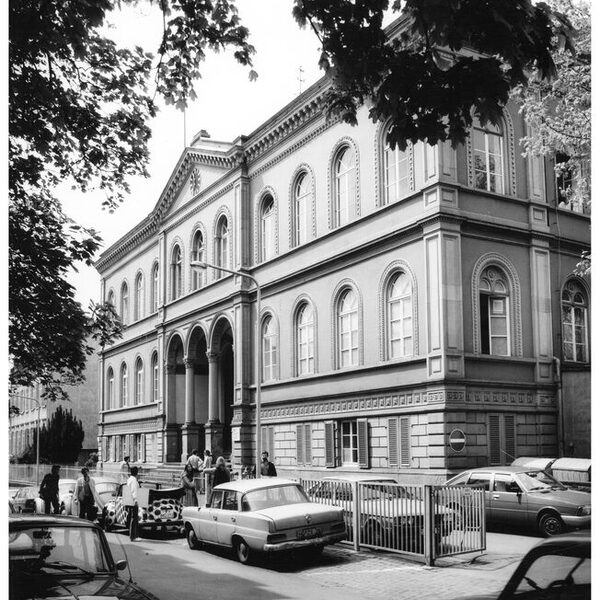Werkkunstschule Wiesbaden
The Werkkunstschule Wiesbaden emerged from an advanced training school for the trades that was founded in 1817, at the beginning of the Biedermeier period, when craftsmen and manufacturers were producing high-quality consumer goods.
Private drawing schools had existed for various branches of business since the late 1820s, and the Wiesbaden Trade School was opened in 1845. In 1847, the trade association for Nassau placed a special emphasis on freehand drawing in a "modeling school for constructive and ornamental drawing". The trade school, which opened in the new building in Wellritzstraße in 1881, offered students a choice of three departments. One of these departments offered commercial drawing for decorative painters, sculptors, photographers, lithographers and engravers and paved the way for the concept of the later Werkkunstschule.
The trade school received a significant boost from the Deutscher Werkbund, which was established in 1907. The groundbreaking idea was based on the social and ethical value of high-quality design: "Refinement of industrial work" was the maxim to guarantee a high standard of form through material and work justice.
In 1918, the school came under municipal control, and in 1919 it was renamed "Handwerker- und Kunstgewerbeschule" (Craftsmen's and Arts and Crafts School) in a move that was somewhat similar to the Bauhaus. In 1928, the school comprised five departments: Interior Design, Decorative Painting, Commercial Art, Fashion and Women's Artistic Work. Closed in 1934, it was reopened in 1947. Under the architect Hans Soeder (1891-1962), the institute was given the name "Werkkunstschule Wiesbaden" and moved into today's Kunsthaus in 1949.
Once again, Bauhaus ideas were to take effect. The painter Vincent Weber, who directed the Werkkunstschule from 1954-65, had studied at the Bauhaus and was able to establish a national reputation. Exhibitions of Bauhaus masters and friends, conferences and community activities did their part to accentuate the importance of the teaching of artistic means as a methodological foundation. This was followed by a radical questioning of teaching, particularly against the backdrop of the 1968 movement, when students demanded co-determination. The closure of the Werkkunstschule was even considered.
Due to the reorganization of the Hessian higher education landscape, the Werkkunstschule was transferred to the Wiesbaden University of Applied Sciences, which was founded on 01.08.1971, and the Department of Design was established with the four subjects of Graphic Design, Fashion Design, Interior Design and Plastic Design.
Literature
Hildebrand, Alexander: Formen und Gestalten. In: Wiesbaden international, 4/1974 [pp. 21-27].
Klockner, Clemens: The founding period is already history. An exemplary view of the prehistory and early years of the Wiesbaden University of Applied Sciences. Publications from teaching, applied research and continuing education, Wiesbaden 2012.
